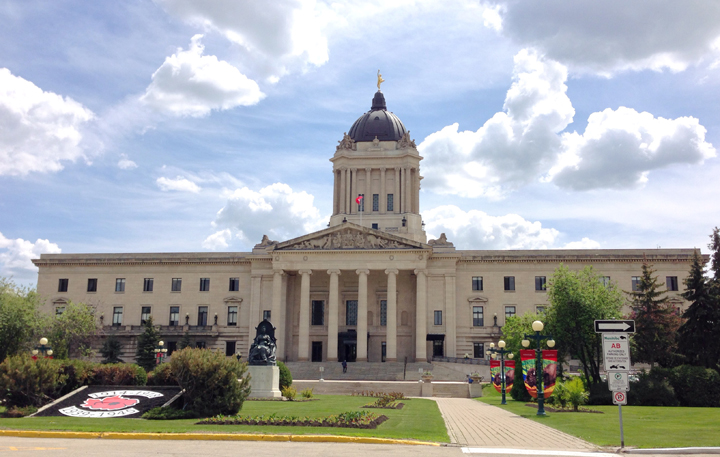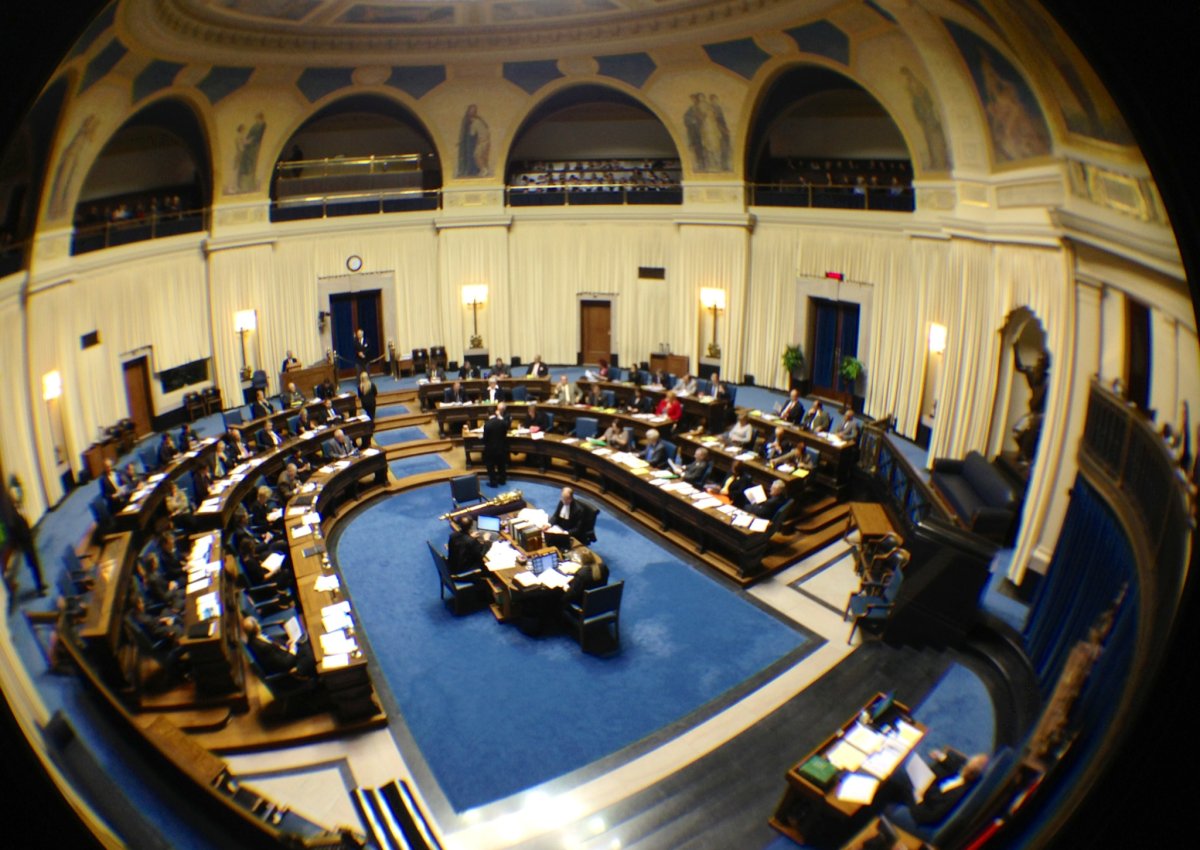WINNIPEG – The seat of political power in Manitoba is the last place one might expect to find the bust of Medusa, recurring odes to “666” and the number 13, alongside Egyptian sphinxes etched with hieroglyphs.

But a closer look at the province’s legislature reveals a whole host of hidden clues left behind by an architect who thought his magnum opus in Winnipeg would be a jewel rooted in the beliefs of Freemasonry in the heart of one of the most powerful cities in Canada.
If ever there was a building designed for fans of Dan Brown’s The Da Vinci Code, this is it.
Between April and October, visitors can take a tour of the legislature led by Winnipeg’s Robert Langdon, Frank Albo, who has studied the legislature and its secrets hidden by British architect Frank Worthington Simon for a decade.
“He thought this building in the centre of Canada was going to be the continental showpiece. This was supposed to be a much bigger city than it ever became,” said Albo. “He placed ideas and symbols in this building, hoping that the public would figure it out. Turns out it took 100 years later for that to happen.”
Without knowing the history behind the symbolism, many elements of the legislature can look out of place. To truly understand the beauty of the legislature, Albo said, you have to understand Simon and his beliefs. Simon was a member of the Freemasons, a secret society that believed architecture “had the capacity to reform the soul,” Albo said.
“He was a strange kind of British genius who believed that occultism, Freemasonry, Hermetic philosophy and many other ideas that we might dismiss today are essential to moral advancement, especially to the government and in beautifully built buildings.”
The first feature hits any visitor at the legislature’s front door, guarded on either side by two huge Egyptian sphinxes — about as far from the desert as you can get.
On the chest of each are hieroglyphics beckoning the sun god to give life to something in the building while in the centre is the symbol of Pharaoh Thutmose III. The pharaoh lived 3,500 years ago and is widely believed to be the founder of Freemasonry. The hieroglyphs are only visible from the roof, Albo said.
But one of the most distinctive features of the legislature — and one visible kilometres away — is the so-called “golden boy” holding up a torch and carrying a sheaf of grain perched atop the building’s dome. According to the legislature, the golden boy is an embodiment of enterprise and youth, facing north to where the province’s natural resources lie.
Simon had something completely different in mind, Albo said. The golden boy is actually modelled after the Greek god Hermes, Albo said.
- Canada’s income gap is growing. Will Budget 2024 help affordability?
- Shoppers faces proposed class action over claims company is ‘abusive’ to pharmacists
- Gas prices in Ontario, Quebec to jump to highest level in 2 years: analyst
- Ontario premier calls cost of gas ‘absolutely disgusting,’ raises price-gouging concerns
“Hermes was a guide of souls and he knew the secrets about the mysteries of the world — alchemy, numbers, astrology and geometry,” he said. “People just think it’s a curious statue encased in gold, but he’s a symbol and a signal to what the architect incorporates into the building’s architecture.”
Inside the legislature, most visitors are blissfully unaware they are walking through an “architectural sudoku puzzle.” In virtually every room in the building, Albo said, you can find the numbers five, eight and 13.
The grand staircase in the legislature foyer is made up of three sets of 13 stairs. Lights in the rotunda are made up of 12 small lights around one larger bright light — both an ode to the number 13 and a symbol of Jesus Christ and his disciples.
The black star on the main floor of the building, and the focal point of the rotunda beneath the dome, has eight points and is 13 feet across.
The repetition of five, eight and 13 is a reference to the famous sequence in math — the Fibonacci series where the two previous numbers add up to the third, Albo said. It was long considered a kind of divine blueprint.
“In the ancient world, this series of numbers geometrically was considered a proportion in the mind of God. So by replicating that proportion on Earth, you are basically drawing upon God’s heavenly power into the design of things.”
The number 666 also appears throughout the building, Albo said. The length and width of the building itself are both 666 feet. The room that houses the grand staircase in the middle of the building is exactly 66.6 feet in width and 66.6 feet in length.
While most would associate the number with Satan, Albo said that was not the architect’s intention.
“In Hermetic philosophy, it does not have that association at all,” said Albo, adding numbers had different associations with planets and stars. “For instance, 666 was considered the number of the sun because if you add up numbers one to 36, that number collectively equals 666.”
The revelations come as a surprise to many who have worked in the legislature for years, never noticing the bust of Medusa over top of the grand staircase or the 13 bulbs that light up the rotunda. Health Minister Erin Selby recently took Albo’s tour and marvelled at “all those clues in plain sight.”
“When the building opened years ago it would have been commonly known the legislature was built by masons,” she said. “Many would have recognized the symbols and the intent.”
Now, Albo said the building requires educated interpretation to appreciate it in the way it was intended.
“It’s like having a Michelangelo in your backyard,” he said. “We have a great world heritage site … not many buildings contain this level of mysticism woven into it. It’s the genius of one mind who told not a soul about it but left so many clues that he was beckoning people to figure it out.”
———
If You Go …
The Hermetic Code tour runs every Wednesday until Oct. 1 from 6 p.m. to 7 p.m. Cost is $39.30 per person. For more information or to book tickets visit http://www.heartlandtravel.ca/hermeticcodetours.htm
The Manitoba legislature is open and offers guided tours year-round. Appointments are required for tours between September and June by calling 204-945-5813. The legislature also has a walking tour brochure on its website: http://www.gov.mb.ca/mit/legtour/pdf/walkingtour.pdf






Comments